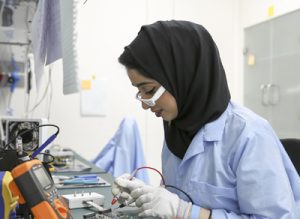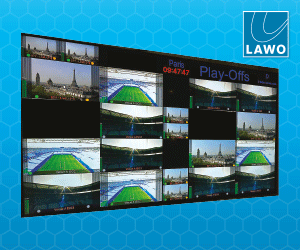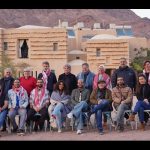The UAEs first nanosatellite is gearing up for launch into space aboard SpaceXs Falcon 9 Rocket. Completed by Mohammed bin Rashid Space Centre (MBRSC) and the Emirati engineering students at American University of Sharjah (AUS), the communication Nanosatellite, Nayif-1, has also successfully passed all stages and tests. The Emirati students were engaged in the design […]

The UAEs first nanosatellite is gearing up for launch into space aboard SpaceXs Falcon 9 Rocket.
Completed by Mohammed bin Rashid Space Centre (MBRSC) and the Emirati engineering students at American University of Sharjah (AUS), the communication Nanosatellite, Nayif-1, has also successfully passed all stages and tests. The Emirati students were engaged in the design and completion of the satellite as part of a partnership between the two entities that was aimed at providing hands-on experience to engineering students on satellite manufacturing.
H.E. Yousuf Hamad Al Shaibani, Director General of MBRSC, said: This achievement reflects the determination and commitment of MBRSC to develop Emirati talent specialised in satellite manufacturing and space science. Sustainable development deliverables and the post-oil phase requires building specialised human capabilities, where entities and institutions have to launch programs specialised in the science and technology sectors to achieve educational goals in line with the UAEs plans and strategies.
Al Shaibani also spoke about the success the UAE has achieved in the satellite industry, saying: The Emirati university students possess the required skills and capabilities to design and build a CubeSat as a result of a knowledge transfer strategy and cooperation between academic and professional institutions that are launching real space projects, enabling students to see the product of their work as a reality in space.
There is no doubt that the field of satellite design and manufacturing is a new industry to UAE universities and students. However, the high spirit and qualifications of the team and the support of the AUS academic staff and MBRSC engineers, enabled them to apply the engineering skills acquired at University to this project.
Dr. Björn Kjerfve, Chancellor of AUS added: Satellite technologies are destined to become an important part of the future of the country and we are pleased to see our students and faculty play their due role in making it happen. Together with partners such as MBRSC, I am sure our future endeavors in this field will go from strength to strength.
Ibrahim Al Qasim, Project Manager of Nayif-1 at MBRSC, confirmed that the flight model of Nayif-1 successfully completed all testing necessary to ensure that the main components of the satellite were working properly.
This included tests on all subsystems such as the power subsystem, control subsystem, the satellite antenna and communication subsystem. These stages were followed by the control system calibration and environmental tests, including thermal and vibration tests, in addition to the final tests for the satellite systems, and measuring its final weight and size.
The installation of the ground station was completed at AUS, which will operate and control the satellite throughout its journey in space.
Although Nayif-1 is scheduled for launch in Q4 2016, the launch date depends on the launching provider, bearing in mind that Nayif-1 is considered a non-primary payload, being a nanosatellite.
Nayif-1 is characterised with a number of advanced features, most notably that its programmed to transfer messages in Arabic. It also contains an active control system usually satellites with a unit size of 10x10x10 cm which are known as 1U Nanosatellites use a passive control system due to their limited size. The control system works accurately to determine the satellites position and direction in space in order to maintain its balance attitude during operations, Al Qasim added.
The knowledge transfer programme and the project were implemented in partnership with Innovative Solutions in Space, a leading international company known for its development of space components and NanoSatellite Systems.
















































































